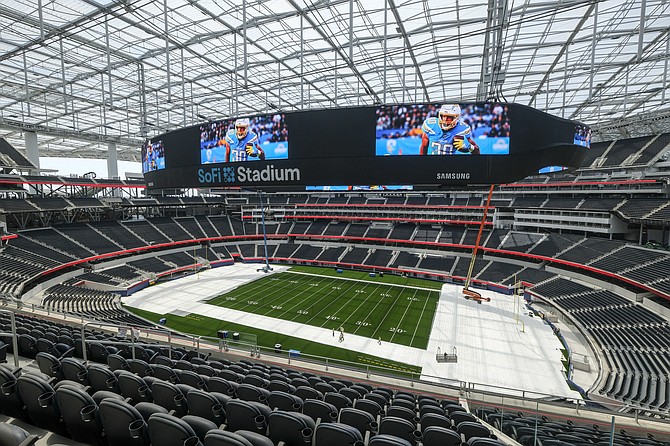
There’s a reason that the Super Bowl is referred to as “the Big Game”: No other annual sporting event in the United States regularly has higher attendance, is watched by more people or makes more money for just about everyone involved.
Originally created in 1966 when the National Football League merged with its rival, the American Football League (AFL), the first AFL-NFL World Championship Game was played at Los Angeles Memorial Coliseum in January 1967 between the Green Bay Packers and Kansas City Chiefs for a crowd of 61,946. The event’s name was officially changed to the “Super Bowl” only in the match’s third year, when the New York Jets triumphed over the Baltimore Colts in what the NFL called “one of the greatest upsets in American football history.” The annual gridiron classic has since lived up to that moniker over and over again, not only growing in viewership throughout the subsequent five and a half decades but generating revenues for host cities, advertisers (and advertising) associated with the broadcast, and for the NFL itself.
Since 1967, Los Angeles will have hosted the Super Bowl eight times, including the upcoming game on Feb. 13. Only Miami and New Orleans have done so more often, hosting 11 and 10 games, respectively. Although 1967’s attendance number might sound robust, the L.A. Coliseum was partially empty; prior to 1972, the venue’s capacity was approximately 76,000. Only five Super Bowls have topped 100,000 fans in attendance, and four of those were played at the Rose Bowl, where capacity has fluctuated between 92,000 and 104,000, depending on the decade and seating arrangement.
According to New York-based marketing research firm The Nielsen Co., viewership for the game has steadily increased as well, jumping from a total of around 50 million in 1967 to approximately 92 million in 2021.
Super Bowl XLIX in 2015, in which the New England Patriots defeated the Seattle Seahawks, remains the most watched program in American television history, attracting 114.4 million viewers.
Nielsen additionally collected numbers for the cost of a 30-second television spot throughout Super Bowl history. Prices started at $37,500 in 1967 and jumped to $5.6 million in 2021. There’s seldom a shortage in demand despite these high price tags; in September 2021, Variety reported that fewer than five slots remained for 2022 broadcaster NBC Sports to sell ahead of Super Bowl LVI.
Meanwhile, the paydays for players have increased tenfold: When the Packers won that first contest, 35 to 10, they received $15,000 apiece, and the members of the Chiefs received $7,500. Per NFL Communications this year, the winners will receive $150,000 each, and the losers will earn $75,000 each. That might not sound like a lot in comparison to record-breaking regular season contracts like the one Kansas City Chiefs quarterback Patrick Mahomes signed in 2020 for approximately $45 million per year, plus bonuses, but with a median wage for NFL players of $860,000 according to sports website AS.com, the game-specific check is a prize in addition to the bragging rights of getting to the Super Bowl.
The economic impact of the Super Bowl on a host city can be difficult to measure, and the league’s projected economic impact report only calculates numbers as far back as 1989. But the Big Game always seems to have a major impact — consistently greater than $150 million. As much as $612 million came into Arlington, Texas, around Super Bowl XLV in 2011, and an estimated $720 million was generated for Glendale, Ariz., from Super Bowl XLIX in 2015. Projections for pandemic-era Super Bowls have been much lower, and how the local community will score in 2022 remains to be seen. The NFL projects the average daytime spending per person and per day for the Super Bowl on Feb. 13 should land between $105 and $190 for a total economic impact of somewhere between $23 million to $52 million just in the city of Inglewood and a total of $234 million to $477 million for the county of Los Angeles.
Super Bowl XXVII:
L.A.’s Most Recent Super Bowl
Date: Jan. 31, 1993
Cost to host the Super Bowl: $4 million
Rose Bowl capacity: 104,091
Attendance: 98,374
Average ticket price: $175.00
Economic impact on community:
$183 million
30-SECOND Ad cost: $850,000
viewers: 91 million
Halftime show viewership: 133.4 million
Average player salary: $666,400
Players’ shares: $36,000 each for the winning team; $18,000 each for the losing team
This was the first Super Bowl in which the half-time show boosted ratings over the game. The show featured Michael Jackson.
Super Bowl LV:
Last Year’s Big Game
Date: Feb. 7, 2021
Raymond James Stadium (Tampa, Fla.) capacity: 65,890
Attendance: 25,000
Average ticket price: $6,200
Economic impact on community: $280 million (estimated)
30-SECOND Ad cost: $5.6 million
viewers: 96.4 million
MEDIAN player salary: $860,000
Player’s shares: $150,000 each for the winning team; $75,000 for the losing team
This Super Bowl had approximately 30,000 cardboard cutouts in the stands because of lower attendance during the pandemic.
Super Bowl LVI:
This Year’s Big Game
Date: Feb. 13, 2022
Sofi Stadium capacity: 70,240
Average ticket price: $7,500
Economic impact on community:
$234 million-$477 million (projected)
30-SECOND Ad cost: $6 million
In-game advertising revenue:
$545 million
Jobs added: 2,200-4,700
Nightly hotel room rates in the area: $318.24-$348.75 (projected)
Average game attendee daytme spending in l.a. County:
$200-$300 (projected)
SoFi Stadium is estimated to be the most expensive stadium ever built at a cost of approximately $5 billion.
Super Bowl I:
The Original Big Game
Date: Jan. 15, 1967
L.A. Memorial Coliseum capacity:
More than 75,000
Attendance: 61,000
Average ticket price: $12
30-SECOND Ad cost: $37,500
Viewers:
26.8 million (CBS), 24.4 million (NBC)
Super Bowl I was the only Super Bowl to be broadcast on two networks, NBC and CBS.
For reprint and licensing requests for this article, CLICK HERE.
